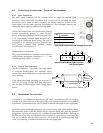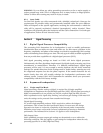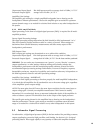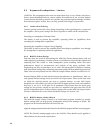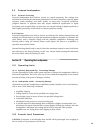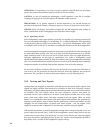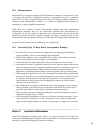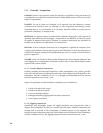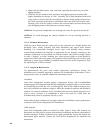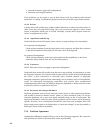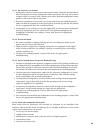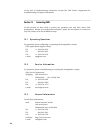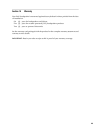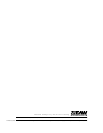
Cosmetics:
Various finishes are used on loudspeaker enclosures depending on the product and its
applications. While these finishes are designed to be durable over long periods, like any
applied finish, they can deteriorate over time, largely depending on the conditions of use.
While this deterioration will not affect performance, refinish the loudspeaker as needed
for aesthetic reasons. Contact the EAW Service Department for instructions.
Section 12 Troubleshooting
12.1 Rigging Problems
Because of the potential serious consequences and liabilities due to faulty rigging, contact
the EAW Service Department to determine the appropriate service solution for any
problems with the rigging hardware integral to the enclosure or EAW rigging accessories.
12.2 Enclosure and Integral Hardware
Enclosure problems, such as loose hardware, faulty joints, or other structural problems,
will usually be heard as distinct buzzes, rattles, or other unwanted noises. To test for
enclosure problems, use a sine wave signal manually swept on the LF sub-system. The
input level should be varied, because certain problems can be level as well as frequency
specific. However, in no circumstances should the sine wave level be higher than 6 dB
below rated power (equal to no higher than 1/2 rated rms input voltage). It may be
possible to field-repair some enclosure problems.
12.3 Cosmetics
While the paint finish and the wood used for the enclosures is of high quality and
durability, mars, marks, and other blemishes may appear from normal handling for an
installation. For paint touchup, use good quality latex paint. For a more permanent and
cosmetically correct appearance, contact the EAW Service Department for the paint
specifications or to purchase small quantities for touch-up. For cosmetically damaged
wood, use common woodworking methods and materials as appropriate for the damage.
12.4 Isolated Sonic Problems
12.4.1 What is Involved
Loudspeakers invariably consist of an input panel, internal components and wiring,
drivers, and an enclosure. All internal components - drivers, crossover/filters, and wiring
- are accessible from the front of the enclosure by detaching the grille and removing the
MF/HF horn and/or woofers.
Troubleshooting for various performance problems usually involves isolating the
problem to one of these areas. In most cases, the fault can be clearly isolated to one of
them and that will determine the appropriate action for servicing.
1. Drivers
2. Input panel, internal crossover/filter components, and wiring (unpowered loudspeakers)
21



